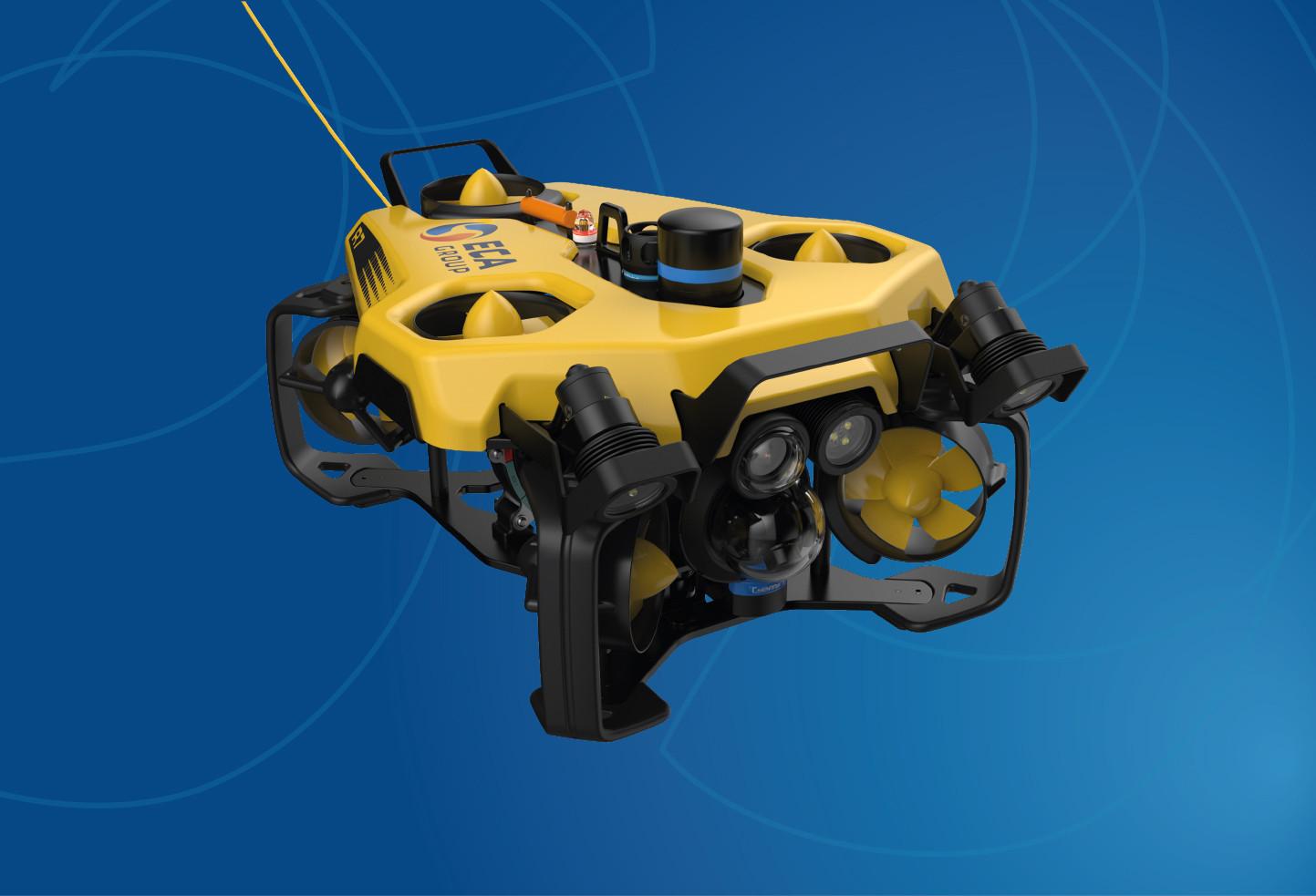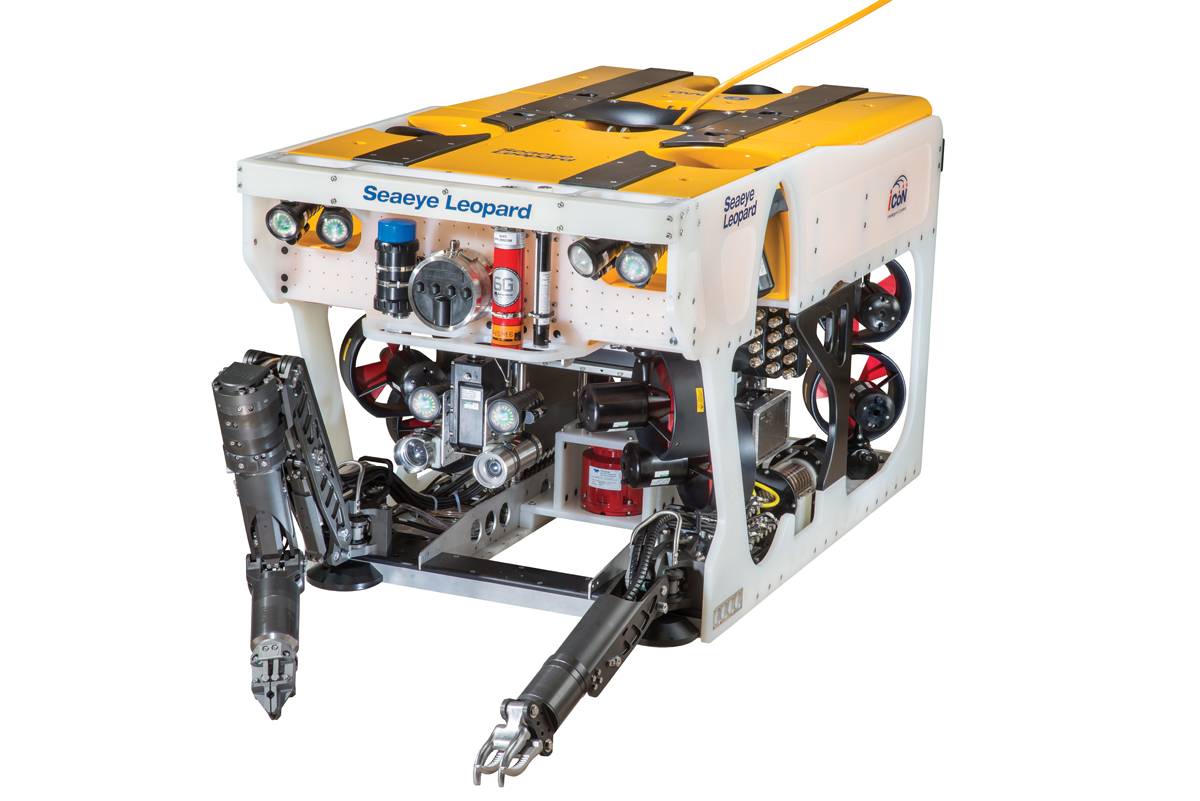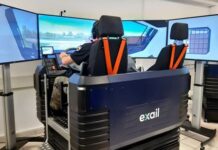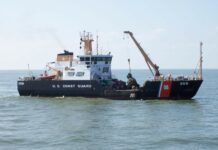Underwater operations, ranging from the simpler hull inspection to the mine and improvised explosive device countermeasures, in addition to war ordnance disposal, have always represented a dangerous business for divers and boat operators. The spread of remotely operated vehicles (ROVs) has significantly reduced the risks and workload associated with underwater operations, and while the unmanned technologies continue to advance, ROVs will continue to play a key role where the positive identification due to different factors continues to be paramount. The European industry has made important strides in the niche segments such as the mine countering, but smaller vehicles continue to come mostly from outside the Old Continent.
Smaller vehicles
The Norwegian Blueye Robotics company offers a family of portable, rugged and commercial-grade vehicles. They include the 9 kg Pioneer model capable of operations to depths of 150 m and in currents up to 2 kt, with an endurance of 2 hours for normal operations. A powerful light allows for night operations and its full HD camera is capable of recording with a wide angle. The images can be visualised on Android or iOS smartphones and managed by the Blueye Xbox controller bundle. The Blueye Pro model, with a similar weight and endurance, can reach depths up to 305 m and operate in up to 3 kt currents.
The more capable Blueye X3 can be equipped with a variety of sensors, manipulators, sonar and positioning systems. The Blueye ROV family has found applications in civil, research and military sectors; customers include the Norwegian and Royal Australian Navies, among others.

Credit: Blueye Robotics
The latest addition to the Exail (formerly ECA Group) family of ROVs is represented by the R7 model, which combines the compactness and ease of deployment of mini-ROVs with the performance, speed and payload carrying capacity of professional observation class ROVs. The 300 m depth rated R7 is equipped with four horizontal vectored and three vertical thrusters allowing for a high manoeuvrability alongside operations at speeds up to 3 kt. The R7 possesses a full digital architecture and weighs 32 kg. The full HD camera is controlled with a main 15” touch screen and secondary screens. It can also be equipped with a manipulator as well as a USBL (ultra-short baseline acoustic positioning system) and/or DVL (Doppler Velocity Log) to accurately track its position in real time.

Credit: Exail
Another key French manufacturer is Subsea Tech with its range of mini as well as the larger 37.5 kg Tortuga inspection class ROVs, the latter family capable of operating in up to 4 kt currents, regardless of the direction, and at depths up to 500 m.
In April 2020, the UK-based Saab Seaeye announced an order from the Netherlands Defence Materiel Organisation (DMO) for its Sea Wasp ROV. Weighing 75 kg with its modular and portable system, it can be operated by a small team – as few as two people – it is easily deployed from ships, shore and smaller boats. Tethered for power and communications and equipped with multifunctional manipulator arms and other add-ons for mission tailoring, together with camera, sonar and other navigational sensors, the Sea Wasp is highly manoeuvrable with six degrees of freedom and can operate in high currents (2.5+ kt) and depths up to 250 m.

Credit: Saab
With thousands of portable and rugged ROVs delivered in more a decade, the Canadian-based Deep Trekker company offers a commercial-grade, battery-powered (direct power alternatively) family of vehicles. The 8.5 kg DTG3 mini observation-class vehicle provides operators the ability to quickly deploy and visually inspect underwater environments within minutes. Equipped with a full HD video recording camera with a 270-degree rotating field of view, the DTG3 can reach depths up to 200 m and a speed of 2.5 kt. The larger and heavier (16.8 kg) Pivot is equipped with six thrusters powered by quick-changeable lithium batteries and a 97-degree rotating tool platform for manipulator, sonar and other equipment. It can reach a depth of 305 m and a speed of 3 kt. Furthermore, the HD 1080-pixel camera can rotate. Optional payloads include imaging and side scan sonar, alongside an USBL positioning. The 305 m depth-capable and 26 kg heavy Revolution vehicle can operate for up to six hours and is equipped with a 260-degree revolving 4K camera head, manipulator and the same optional equipment as the Pivot. The larger Deep Trekker products have found worldwide success among its customers, including the US Armed Forces and homeland agencies, as well as European operators, including the UK (DTG3), German Navy (Revolution) and the Italian Carabinieri (Revolution).

The mission specialist Defender ROV from US company VideoRay is the most diffuse US product worldwide, in particular among armed forces and agencies. In addition to the US Navy, it is in service or under firm order from 20 other navies and coast guards from allied nations, including European operators such as the Royal Navy and others. With a depth rating up to 400 m (2,000 m as an option) and weighing 32.5 kg (including control equipment), the Defender has four vectored horizontal and three vertical thrusters. In addition to its HD camera, it possesses a wide range of systems, including a rotating manipulator (five heads), multi-beam and scanning sonar, and additional navigation equipment (USBL, DVL and autonomous control) can be integrated.

Credit: VideoRay
The US Strategic Robotic Systems (SRS) Fusion ROV is another product widely distributed among US and Allied armed forces. The 25 kg heavy ROV has a depth rating of 300 m, and is equipped with four horizontal and two vertical thrusters. The Fusion can achieve speeds of 4+ kt, with its typical endurance being up to 3-4 hours duration. Equipped with an HD camera, it also features a forward and sidescan sonar, USBL, DVL, altimeter, GPS (vehicle), Wi-Fi and AHRS.
Mine identification and disposal systems
ROVs continue to play a key role as mine identification and disposal systems (MIDS).
The MuMNS (Multi-Shot Mine Neutralisation System) is the latest development from Saab in this sector. The system has been acquired both by the French Navy and the Royal Navy.
Despite its dimensions (415 kg fully loaded weight, a length of 2.7 m and 1 m width), MuMNS is highly manoeuvrable with six Degrees of Freedom (DoF) and can dive to 300 m.

Credit: OCCAR/Thales
The ROV is equipped with advanced sensors for mine identification and operates with a maximum of three charges of its mine neutralisation system (MNS). Thus, multiple missions before returning to the unmanned mother platform are possible. Proceeding automatically or manually controlled at speeds reaching 4 kt to a waypoint, it locates the target using its on-board sonar and cameras. The pilot manually controls the final approach to the target. Once positively identified, the pilot attaches the charge to the mine and releases the mine neutralisation system from the vehicle. It remains suspended mid-water until a configurable timer releases a float to the surface. Once the deployable floats reach the surface, the charge can be remotely initiated on command. A coded radio signal unique to each MNS is used to neutralise the mine. This allows it to activate one or many mines together.
In November 2022, Seatronics, a brand within the UK-based Acteon’s Data and Robotics division, announced it had delivered, installed, and commissioned the first two Valor ROVs in MIDS configuration on Elbit’s Seagull unmanned surface vehicle (USV). The latter is a multi-shot, configurable and reusable mine disposal solution that can detonate multiple charges acoustically. The Valor ROV has a weight of 80 kg with a payload of more than 21 kg and a depth rating of 300 m. It is capable of deploying and operating in up to Sea State 3. The MIDS configuration features a multi-sensor package together with an ECS CobraMDS and an intervention capability with four charges. The combination between the multi-sensor package, including an inertial navigation system, sonar and cameras, and an on-board object classification system allows for the accurate detection and classification of objects.
The target classification system uses machine learning and AI algorithms to categorise the seabed and floating items such as mine-like objects or potential mines. In the latter case, the triggering command is sent from the control station with the umbilical, and then acoustically telemetered to the detonation device on the Cobra, using encrypted signals. According to Seatronics, the Valor MIDS is currently the only vehicle of its size able to offer a multi-shot capable, reusable solution.

Credit: Acteon
Exail (formerly ECA Group) offers its MIDS suite including the Seascan Mk 2 and the K-ster C ROVs. It is at the heart of the MCM solution provided by Belgium Naval and Robotics (BNR), a consortium between Naval Group and Exail, to the defence ministries of Belgium and the Netherlands for the next generation BE/NL stand-off MCM capability. It encompasses motherships that will employ a ‘toolbox’ consisting of multiple off-board MCM systems. Each of the 12 motherships is equipped with two lateral stations for launch/recovery of a provided Inspector 125. Exail’s USV can autonomously deploy and recover either the A18-M autonomous underwater vehicle (AUV) equipped with the UMISAS synthetic aperture sonar, or the towed vehicle with the T18-M towed sonar. Other elements of the MIDS suite include the Seascan Mk2 and the K-ster C ROVs, provided by Exail. For mine detection and relocation, the Seascan Mk2 is using a sonar. Cameras, remotely controlled by operators on the mothership, help to identify the type. The K-Ster C is specifically designed for mine clearance. Each of the ROVs is linked to its USV by a thin cable. Given that K Ster C has its own battery pack, the cable does not include a power wire, which is essential for the overall concept pursued by Exail since a thin cable means less drag. Thus, currents have less effect on the ROV. This solution is not only more economical, but also superior in operational terms given that power cables are both more expensive and a drain on USV power, thereby limiting its operational capabilities, claims the manufacturer.

Credit: Exail
The Italy-based L3Harris Calzoni is currently working on the Hunterwater programme. It is based on an unmanned system-of-systems to perform the complete stand-off minehunting operation by means of a lightweight simple-to-use unmanned MCM module. The package consists of a USV, 8 m in length, capable of carrying and operating a dedicated suite with two main components: the ROVSCAN and the VGA. The hybrid ROV and sidescan sonar combine typical functions of a ROV with those of a sidescan sonar performing site survey, identification, and acoustic localisation of the threats. It also deploys multiple markers that allow the mine neutralisation, according to Calzoni. The VGA, a disposable acoustic guided vehicle, which is both compact and lightweight, features an automatic target reacquisition and neutralisation capability by means of an innovative precise acoustic localisation. It is carried and launched from the USV in at least four units for each mission.
The MIDS segment is covered by the Atlas Eletronik SeaFox system, which comes in inspection, disposal and training versions. It is in service with more than ten worldwide customers, including the navies of Finland, Germany, Japan, Sweden, US, and the Royal Navy.

Credit: Saab Seaye
Saab is offering the heavier but more capable Double Eagle family, which in addition to both MkII Mine Disposal Vehicle (MDS) and MkII/MkIII Propelled Variable Depth Sonar (PVDS) Mine Reconnaissance Vehicle, includes the newer Double Eagle SAROV semi-autonomous version. The latter has been acquired recently by Poland’s Remontowa shipbuilding company in additional batches of vehicles to equip the Kormoran II class MCMVs of the Polish Navy. Italy’s Gaymarine Pluto ROV family have been sold to different customers including the Algerian Navy. It also exists in a later version, the Pluto Gigas, with enhanced capabilities and sensors for operations from a non-equipped mothership.
Larger multi-role observation and working ROVs
The growing attention for seabed warfare operations triggered by the sabotage incidents of the Nord Stream pipelines in the Baltic Sea is leading to a greater use and procurement of new working ROVs.
The UK-based Saab Seaeye manufactures a range of electric powered ROV systems for a wide range of professional applications. The workhorse of the SAAB Seaeye ROVS is the Leopard, an innovative mid-size electric ROV that provides optimised transportability and operational capability in a reduced footprint.
In April 2021, the NATO Support and Procurement Agency (NSPA) acquired Leopard for the Spanish Navy. The system provides for improved diving support capabilities and facilitates the execution of responsibilities for the International Submarine Escape and Rescue Liaison Office. Connected to the ROV is a launch and recovery system, tether management system, hydro acoustic positioning capability and a shipboard control module. Leopard has a launch weight of ca. 1,200 kg. Fitted with manipulators, it can carry a payload of 105 kg, and without, 205 kg. Depending on the model, it can reach 2,000 m and 3,000 m depths.
Other variants within the Saab Seaeye family of ROVs are the Panther, Cougar, Tiger, Lynx and Falcon.
The Seaeye portfolio also includes the eWROV electric full-sized Class III B ROV system and the Sabertooth family. The latter is a hybrid AUV/ROV capable of working in deep water either as an autonomous vehicle or via tether. Its power, tether-free operation and its 360° hovering manoeuvrability make the Sabertooth an ideal option for autonomous inspection or maintenance and repair tasks, as well as offshore survey work.
The Sabertooth is available as a single hull or double hull vehicle capable of operating at depths of 1,200 m or up to 3,000 m for the double hull vehicle. It can be based for more than six months at an underwater remote docking station ready for operations. Also based in the UK as part of Forum Energy Technologies providing submarine rescue systems, Sub-Atlantic offers a range of electric observation-class ROVs that extends from the versatile Mohican to the powerful work-class Comanche capable of reaching depths of 6,000 m.
Italy’s Saipem Sonsub offers a series of commercial working subsea drones, including the Innovator 2.0 ROV, rated for depths to 3,000 m. It has been acquired by the Italian Navy for its new capability, a special forces and diving operations/submarine rescue ship (SDO-SuRS). FlatFish and Hydrone are other deep-water dual-role ROV/drones in Saipem Sonsub’s portfolio. The new generation drone FlatFish is capable of reaching depths of 3,000 m and has an endurance of up to 12 hours. Likewise, the units of the Hydrone family can operate at depths of 3,000 m. An underwater docking station allows them to stay on the seabed for up to 12 months. Through a remote control network any surface platform of opportunity can operated a Hydrone. The Hydrone-R is already in service, while the complete electrically operated version (Hydrone-W) will be available by the end of 2023.
The Italian Navy operates two models of L3Harris Ageotec ROVs: Sirio for observation missions and the multi-purpose ROV Perseo.
In addition to Exail, with its H-family ranging from the H300V (300 m) to the H800 (800 m) and H-ROV (2,500 m), the French Forssea Robotics offers its Argos ROV with a 500 m depth rating (1,000 m as an option), weighing 170 kg, including a payload of 20 kg.
Luca Peruzzi











